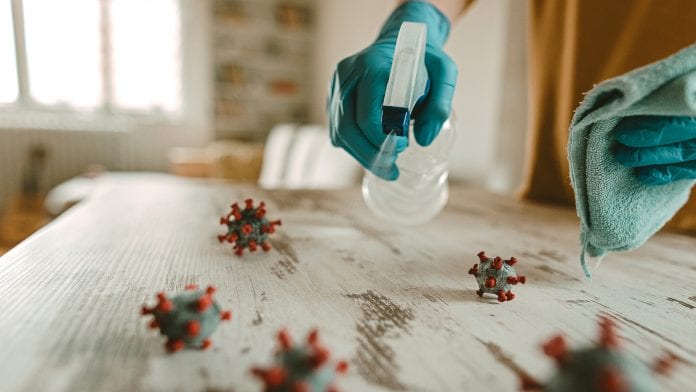
New research has revealed critical factors that facilitate the spread of disease from harmful bacteria that survive on hospital and kitchen surfaces, which could help find new ways of combatting them.
The study, carried out by the John Innes Centre, looked into the mechanisms which enable the human pathogen Pseudomonas aeruginosa to survive on hospital surfaces.
In order to survive outside of a host, pathogenic bacteria must withstand various environmental stresses and one way they do this is through the sugar molecule, trehalose. This sugar is associated with a range of external stresses, particularly osmotic shock, which is sudden changes to the salt concentration surrounding cells.
Protection against external stresses
The researchers utilised analytical biochemistry and reverse genetics using mutated bacteria lacking key functions, to show that trehalose metabolism in P. aeruginosa is connected to the biosynthesis of the carbon storage molecule glycogen. The team’s experiments demonstrated that disruption of either trehalose or glycogen pathways significantly reduced the ability of P. aeruginosa to survive on surfaces such as kitchen or hospital counters.
While both trehalose and glycogen are important for stress tolerance in P. aeruginosa, the study found that trehalose helps the bacteria to survive in conditions of elevated salt and glycogen contributes to survival in dry(desiccated) environments.
The team says that this means targeting the trehalose and glycogen pathways could help to limit pathogen survival.
Corresponding author of the study, Dr Jacob Malone, said: “We have shown how a dangerous human pathogen Pseudomonas aeruginosa responds to environmental challenges, such as salt stress or drying out. Disrupting the production of certain stress-tolerance sugars in this bug significantly reduces its ability to survive on kitchen and hospital worksurfaces.
“Conventional wisdom says that trehalose was responsible for both phenotypes, but we have shown that trehalose only protects against osmo-stress and glycogen is needed to protect against desiccation. We were also surprised to see such a marked drop in surface survival when we disrupted the pathways in the bugs.”
The next step for the research is to understand how trehalose and glycogen metabolic pathways are regulated in P. aeruginosa and closely related species and understand how glycogen accumulation allows the bacteria to survive in dry environments and provide more explanation of how and when different parts of the pathways are turned on and off.
























